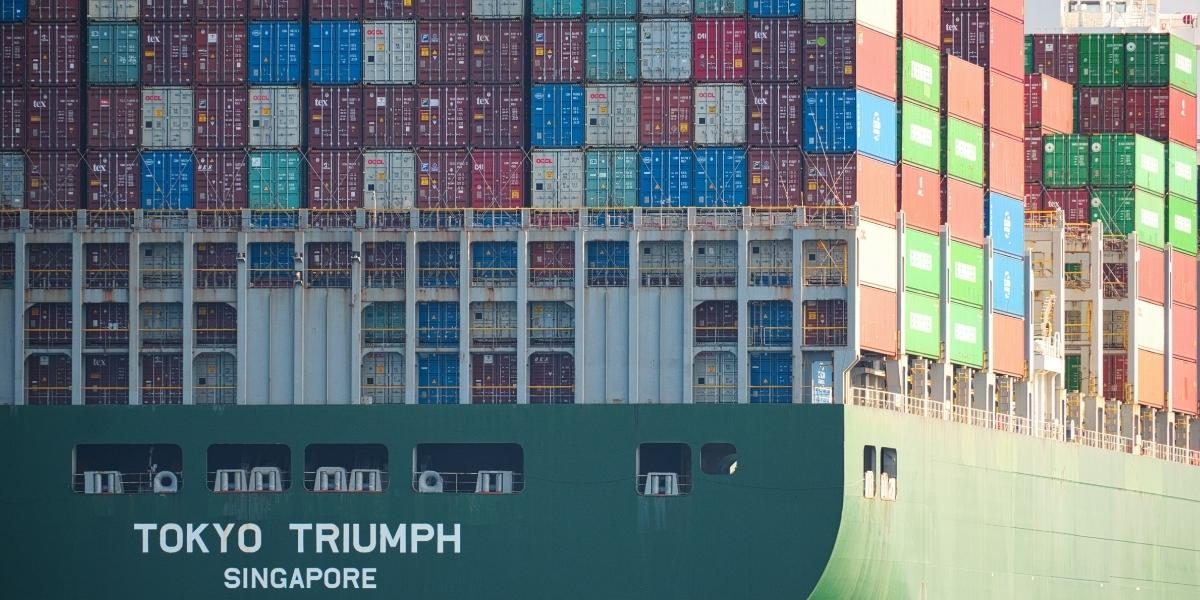Decoding Tariffs: A Comprehensive Guide to Understanding Their Purpose, Impact, and Global Implications
Tariffs, taxes imposed by governments on imported or exported goods, are a cornerstone of international trade policy. While often viewed through the lens of trade negotiations or political strategy, tariffs play a fundamental role in shaping the global economy. From their historical use as revenue sources to their modern-day implications for industries and consumers, tariffs have significant economic, political, and social ramifications. This comprehensive guide will explore what tariffs are, their various forms, the purposes behind their use, their impact on the economy, and the ongoing debates surrounding their role in global trade.
Read Also: Eco-Friendly Architecture: Building a Sustainable Future
Defining Tariffs and Their Mechanisms
A tariff is essentially a tax placed on imported or exported goods, often implemented by a government to control trade, generate revenue, or achieve specific political goals. Tariffs are typically levied in different ways, depending on the nature of the trade and the desired outcomes.
Types of Tariffs
-
Ad Valorem Tariffs: These are levied as a percentage of the value of the goods being imported or exported. For example, a 10% tariff on a product worth $1,000 would amount to a $100 tax.
-
Specific Tariffs: These are fixed fees imposed on a particular quantity of goods, such as a $5 tariff per kilogram of steel imported.
-
Compound Tariffs: These tariffs combine both ad valorem and specific tariffs. For instance, a product might be subject to a 5% ad valorem tariff and a $10 specific tariff per unit.
The Collection and Implementation Process
Tariffs are typically collected by customs authorities when goods cross national borders. The goods are declared to the authorities, and the appropriate tariff is assessed and collected before the goods can enter the domestic market. Tariffs can be implemented unilaterally or as part of trade agreements between countries.
The Historical Context of Tariffs
Historically, tariffs have been one of the primary sources of government revenue. Their role has evolved over time, but they have consistently been used as tools in international trade negotiations, protectionism, and economic policy.
Tariffs as a Revenue Source
In earlier times, particularly during the 18th and 19th centuries, tariffs were a critical source of income for governments. Before income taxes became widespread, many governments relied on tariffs as their primary method of generating revenue. For example, in the United States, tariffs were a significant source of revenue until the early 20th century when income tax systems were established.
Protectionism and Trade Barriers
Tariffs have often been used as a form of protectionism, designed to shield domestic industries from foreign competition. By making imported goods more expensive, governments aimed to encourage consumers to buy domestic products. The Smoot-Hawley Tariff Act of 1930 in the United States, for example, imposed high tariffs on thousands of imported goods and contributed to the severity of the Great Depression by encouraging retaliatory tariffs from other countries.
Tariffs as a Negotiating Tool
Tariffs have also been employed in trade negotiations as a way to incentivize other nations to reduce their own trade barriers. Governments may impose tariffs to push for better terms in trade agreements, or to protect emerging domestic industries from foreign competition.
The Intended Purposes of Tariffs
Governments implement tariffs with specific economic, political, and strategic goals in mind. These goals can vary depending on the needs of the country at a particular time and the overall global trade environment.
Protecting Domestic Industries
One of the primary reasons governments impose tariffs is to protect domestic industries from foreign competition. By raising the price of imported goods, tariffs can make domestic products more attractive to consumers. This protectionist policy is particularly common in industries that are in their early stages of development or are deemed critical for national security.
Generating Revenue
Tariffs have historically been an important source of government revenue, especially in countries where other forms of taxation, like income taxes, are less developed or harder to enforce. While tariffs are no longer the main revenue source for most modern economies, they still play a role in certain countries.
Addressing Trade Imbalances
Governments may also use tariffs to address trade imbalances. If a country is importing more than it is exporting, tariffs can help reduce the volume of imports, thereby improving the trade balance. By reducing imports, tariffs can also encourage domestic production and consumption, which may help boost the national economy.
Political Leverage
In certain cases, tariffs are imposed as a form of political leverage in international relations. For instance, a country may impose tariffs on another country’s products to retaliate against perceived unfair trade practices, human rights abuses, or violations of international norms. Trade wars—such as the ongoing US-China trade dispute—often involve tariffs as a tool for negotiating political or economic concessions.
The Economic Impacts of Tariffs
While tariffs are intended to serve specific economic and political objectives, they also have significant consequences for both the domestic economy and international trade. These impacts can be both intended and unintended.
Effects on Prices and Consumer Welfare
Tariffs typically lead to higher prices for consumers. Since tariffs raise the cost of imported goods, domestic consumers often face higher prices for goods that rely on imported components or finished products. This can reduce consumer welfare, particularly for low-income households, which may spend a larger portion of their income on imported goods.
Impact on Domestic Production
While tariffs can encourage domestic production by reducing competition from foreign goods, they can also have negative consequences. For example, retaliatory tariffs from other countries can harm domestic industries that rely on exports. Additionally, tariffs on inputs used in production can increase the cost of manufacturing, leading to higher prices for domestic products.
Disruptions to International Trade Flows
Tariffs can disrupt global trade patterns, leading to trade diversion where goods are no longer sourced from the most efficient suppliers. In the long term, this inefficiency can lead to reduced overall economic growth. Countries may also seek alternative markets or suppliers, which can shift global supply chains and result in the relocation of production to other regions.
Tariffs and International Trade Agreements
In the context of global trade, tariffs are often addressed in bilateral or multilateral trade agreements. These agreements aim to reduce or eliminate tariffs between member countries to encourage the free flow of goods and services.
Reducing Barriers Through Trade Agreements
Many international trade agreements, such as those negotiated under the World Trade Organization (WTO), aim to reduce tariffs between countries. The North American Free Trade Agreement (NAFTA), now replaced by USMCA, and the European Union’s single market are examples of how regional agreements can reduce or eliminate tariffs within a specific area, enhancing economic integration and trade.
The Debate Over Protectionism and Global Trade Liberalization
While trade agreements aim to reduce tariffs, there is ongoing debate about the balance between free trade and protectionism. Advocates of free trade argue that lowering tariffs increases efficiency and promotes global growth, while those in favor of protectionism believe tariffs are necessary to safeguard domestic industries from unfair foreign competition.
The Political and Social Dimensions of Tariffs
Tariffs are not just economic tools; they also have significant political and social implications. The use of tariffs often sparks intense debates within countries and among international partners.
Political Debates
In many countries, tariffs are a source of political contention. Policymakers and interest groups may support tariffs to protect certain industries, while others argue that tariffs hurt consumers and disrupt global trade. Special interest groups, such as labor unions or industry associations, often lobby for tariffs to protect domestic jobs or ensure a competitive market.
Social Consequences
The social consequences of tariffs can vary. For consumers, higher prices on goods can reduce disposable income and affect purchasing power. In some cases, tariffs can lead to job losses in industries that depend on imported raw materials or components. Additionally, communities tied to industries that face tariffs may experience economic downturns as a result of reduced exports or job losses.
The Future of Tariffs in a Globalized World
As the global economy becomes increasingly interconnected, the role of tariffs is evolving. Factors such as the rise of global value chains, the digital economy, and the growing influence of emerging markets are reshaping how tariffs are used in international trade.
The Role of Tariffs in a Globalized Economy
In an era of global supply chains, where goods are often produced in multiple countries, tariffs can disrupt the efficiency of trade. Global value chains involve the production of goods in multiple stages, often across different countries. Tariffs on intermediate goods or components can increase costs and reduce the efficiency of these global production networks.
Emerging Trends and Challenges
The rise of green technologies, digital trade, and emerging markets is likely to shape future tariff policies. As countries continue to face global challenges such as climate change, cybersecurity, and trade imbalances, tariffs may be used in new ways to address these issues, such as imposing environmental tariffs on carbon-intensive products or regulating digital goods and services.
Read Also: Machu Picchu: The Lost City of the Incas and Its Legacy
Tariffs play a vital role in the global economy, serving as both a tool for governments and a point of contention in international trade. Understanding their mechanisms, historical context, and the wide-ranging effects they have on economies, industries, and societies is essential for navigating the complex world of global trade. While tariffs can serve valuable purposes, their impacts are multifaceted, requiring careful consideration of both economic goals and social consequences.








